
CONTACTAbout UsCAREER OPPORTUNITIESADVERTISE WITH USPRIVACY POLICYPRIVACY PREFERENCESTERMS OF USELEGAL NOTICE
© 2025 Equal Entertainment LLC.
All Rights reserved
All Rights reserved
By continuing to use our site, you agree to our Private Policy and Terms of Use.
The Mormon Church is having its most visible period ever.
The musical The Book of Mormon is the biggest hit Broadway has seen in years. TLC's Sister Wives portrays the real housewives of polygamous families--granted, something no longer sanctioned by the church. And Mitt Romney, the world's second or third most famous Mormon (after Donny and Marie Osmond, of course), has been fighting for the Republican presidential nomination, even besting Jon Huntsman, a fellow Latter-day Saint, along the way.
But being out in the mainstream is a mixed blessing for the faith, which has been a frequent target of ridicule (see: The Book of Mormon) and backlash (after introducing Texas governor Rick Perry, another of Romney's now-bygone rivals for the GOP nomination, at the influential Values Voter Summit in October, Texas megachurch pastor Robert Jeffress reiterated his belief that Mormonism a cult). So the Church of Jesus Christ of Latter-day Saints launched a national advertising campaign last year that aims to introduce the public to a diverse collection of Mormons, including African-Americans and Latinos. The "I'm a Mormon" campaign hopes to dispel myths and end prejudice at a time when the stakes have never been higher.
This LDS media education effort bears striking similarities to campaigns that LGBT groups have undertaken over the years. Banking on the wisdom that knowing an individual builds empathy for a marginalized group has long been a tactic of the gays. With such shared desires and strategies, it seems as if the two communities ought to be able to find common ground. But Mormons won't find too much empathy among gays these days.
In the campaign to pass Proposition 8, the 2008 ballot measure that amended the California constitution to override the state Supreme Court's decision allowing same-sex couples to marry, an estimated 40% of the pro-Prop. 8 funding came from Mormons, in California and elsewhere, acting at church leaders' behest. (The exact figure is hard to determine because campaign donation records do not include individuals' religious affiliation.) This caused a rift that endures more than three years later. Rage among gays over the LDS actions gave rise to the website StopTheMormons.com and the critical film 8: The Mormon Proposition. Gay Republican Fred Karger, another presidential aspirant, launched his Top 10 Craziest Mormon Beliefs website largely to challenge Romney's candidacy.
But even as the Mormon Church is calling on its members to support a similar anti-equality initiative in Minnesota, there are individual church members bucking the party line--no small feat in the LDS denomination--and working to build bridges with LGBT people.
Mitch Mayne is a gay Mormon who was asked by Don Fletcher, bishop of the San Francisco Stake's Bay Ward (ward is the church's term for a congregation, and a stake is a larger body that includes several wards) to take a leadership post in the church to, Mayne says, "begin to repair the damage the church did during Prop. 8." After the proposition passed, the Oakland Stake, where Mayne was long active, held public forums at which LGBT people and LDS members have come together to find common ground and do some healing. He was asked to continue that work in the Bay Ward, where he became executive secretary in 2011.
"I'm not renouncing my sexual orientation," says Mayne. "I got called, and I did it as my authentic self." Like any Mormon, he must agree to not have sex outside marriage. The fact that he cannot yet legally marry is not lost on Mayne, but he feels his "calling" supersedes it, at least for the time being. "It was done in the right spirit," he attests of his appointment to local leadership. "It wasn't a shift in doctrine, but it was a shift culturally."
While a cultural shift in the San Francisco area may be a politically expedient move and might even smack of pandering, Mayne's work is an essential step in the right direction. And it's resonating beyond Northern California. Through his presence on social media, Mayne has drawn the attention of straight Mormons who live in more conservative communities and are seeking to reconcile their immediate world with their own more progressive views.
Lindsay Hansen-Park is a Mormon mother of two children (with a third on the way) who lives in an area of northern Utah that is majority Mormon. A few years back, she experienced a crisis of faith when a local scandal forced her to confront her community's prejudices. A little girl was attacked in her neighborhood; the only suspect, Hansen-Park says, was a man known to be gay. "He was the only gay man in the neighborhood, and there was no evidence against him," she says. Seeing hatred and bigotry firsthand shook Hansen-Park's sense of herself and her religion.
Living in an isolated community, she turned to the Internet, where she has found solace in a blog she's active on called Feminist Mormon Housewives, which is part of "The Bloggernacle," a consortium of independent-thinking LDS blogs. "We're big in the LDS online community, where we're considered liberals," she says. Online she connects to like-minded women who discuss some challenging issues. "There's a huge online community of people fighting against the homophobic rhetoric we hear," she says. And yet she recognizes the harsh realities. "The trouble we have with the LGBT community is our own fault. We have a lot of repenting to do and we have a long way to go." While Hansen-Park is confident that her online friends share her views, it's tough to find allies where she lives, and even tougher within the leadership of the church.
In fact, Hansen-Park fears the "I'm a Mormon" campaign only pays lip service to diversity and doesn't truly reflect the church's stance. Still, she has hope--not so much for the power it has to teach the rest of the world about Mormons, which is ostensibly the campaign's aim--but for what the campaign can teach Mormons themselves. "What I'm hoping for the campaign is it will show LDS people how diverse we can be and that that's OK," says the 29-year-old.
"This Mormon Moment," as LDS members refer to the wave of attention currently focused on the church, is a mixed blessing to Hansen-Park. "I'm excited because from where I stand, the members need to open their eyes to the bigger world. This is forcing us to do that. We don't have to be so exclusive." One the other hand, she says, "It's hard because a lot of members get really defensive and become more dogmatic in their stance."
Laurie Maffly-Kipp believes that what we're seeing with the church right now is the gradual evolution of a large institution. As chair of the department of religious studies at University of North Carolina at Chapel Hill, with a specialty in teaching and writing about the Mormon Church, Maffly-Kipp sees incremental change. "There's lots of homophobia in the church, but the line has shifted a bit," she says. "I'm not hopeful that things are going to change quickly, though." She says the LDS Church is like any other massive institution that is incredibly slow to change. "You don't see the Catholic Church shifting quickly either."
She adds that California is the most natural place for outlying sentiments to take hold within Mormonism. "Any change is going to start in a place like that, and that's true in any church," she says. "There are all kinds of Protestant churches that are struggling with gay issues all the time. It's not like the Mormons are really out of step here [among religious groups]."
The "I'm a Mormon" campaign is further evidence of this slowly churning evolution. Maffly-Kipp has seen the church grow more media-savvy in the last five years. The fact that the campaign is interactive online is another signal of a progressive trend for the traditionally insular community. "They're clearly aiming for a younger, hipper image," says Maffly-Kipp. "It's a way of saying, 'We're relevant. We're not fuddy-duddy. There are even people who are skateboarders who are Mormon.'" She points out that there have always been LDS ads, but the presentation used to be of soft-focus images of family and purity. "There was always that sappy music in the background," she says, laughing.
Those sappy ads used to run all over late-night TV, and they actually inspired one of the higher-profile gay campaigns that launched in the wake of Prop. 8. "Get to Know Us First" was the brainchild of filmmaker and gay parent John Ireland, who secured the support of POWER UP, an organization charged with upping the visibility of gay women in the media, to produce pro-gay ads. "It's ironic," says Ireland, who used as his model the "beautifully shot, golden sunlight images of families walking hand in hand" in the old LDS ads.
Ireland's ads debuted on California airwaves during President Obama's inauguration and show gay couples in happy times with kids, playing basketball and eating dinner "just like normal people," he says, his tongue in cheek.
He was reacting to the fact that the pro-gay No on 8 campaign had expressly avoided showing images of gay parents before the election. In retrospect, of course, that choice -- presumably driven by fear that such a move would stir up fear and hatred -- was absurd and quite possibly disastrous. The ads featured straight people talking about the gay relatives who are important to them, as in one that showed a straight couple talking about how their gay daughter will "lose the right to marry." The TV spots even avoided the phrase "gay marriage," opting instead to couch the conversation in euphemisms ("Regardless of how you feel about marriage, it's wrong to eliminate fundamental rights") or respond obliquely to the opposition's ads, as when California superintendent of public instruction Jack O'Connell argued on-screen, "Prop. 8 has nothing to do with schools or kids. Our schools aren't required to teach anything about marriage."
Ireland's tactic is "replacement imagery," giving mainstream images of straight couples a direct alternative. It's also about stirring up emotion. "The opposition's ads were all about emotion," Ireland says of the Yes on 8 commercials, describing darkly lit images with creepy music, some even suggesting actions by gay men with young children. He was working to counter such insidious insinuations.
Ireland's commercials got statewide play on local stations, but not without a fight. Initially rejected by KABC, the Los Angeles affiliate of the ABC network, Ireland was able to turn a ban into an embrace, thanks to a push by the Gay and Lesbian Alliance Against Defamation. "It became a pattern all over the state," he recalls. "We'd get rejected, then GLAAD would issue a press release and an executive at the station would have a meeting with us saying that the previous decision had been the work of an employee who had been duly disciplined." And then "Get to Know Us First" would receive free airtime. It was never clear if the turnaround was simply politics or a genuine change of heart, or a little of both. "All you have to do is get banned and everyone wants to see it," Ireland marvels. "It started to feel like blackmail, but that became our model." He says the campaign received $500,000 in free ad time.
The "Get to Know Us First" ads continue to run in California and will likely have a new life as part of a national campaign that Ireland was not ready to name. "We're not in it for the name recognition," he says, explaining that a gay rights organization will likely adopt the ads to promote its own work.
Though not Mormon himself, Ireland grew up in a heavily Mormon community in Modesto, Calif. He recounts that one of the great disappointments of his life came when he was reading the rolls of Prop. 8 donors and learned that the man who had been his best friend while growing up had given generously to the Yes on 8 campaign, as had others from his childhood. "But I saw that they too had been marginalized," he says. "I understand that instinct [to protect one's way of life] for any community. I feel for Mormon people who are targeted" for having funded Prop. 8. Ireland's experience making these ads has only strengthened his belief that building bridges is the best way forward, even with the Mormon Church, which has not been much of an ally. "We have a lot to learn from other marginalized communities," he says.
As an openly gay Mormon, Mayne maintains that there are lessons to be learned on both sides. "Do I find it ironic that the Mormon Church is doing something [gays have] done for decades? Yes!" he says of the similarly themed get-to-know-us ads. Still, he has been disheartened to see rage against LDS from LGBT people, even though he's not surprised by it. "I've had yelling matches in the weight room about my participation in the faith," he says. Some of those yelling matches have actually resulted in friendship. Mayne firmly believes in the power of individual interaction--getting to know a gay person, getting to know a Mormon--something perhaps too few of both groups do these days. "When you put a human face on it, a heart, then it becomes so much more difficult to discriminate," he says, adding, "I don't have to lose in order for you to win."
The timing of the "I'm a Mormon" campaign is doubtless connected to the presidential campaign, though officially the church denies this, claiming it "has no position politically," as Ron Wilson, senior manager for Internet and advertising told the NPR show On the Media last year. "It has nothing to do with that," Wilson said of the timing's coincidence with Romney's campaign. (Wilson declined The Advocate's request for an interview.)
Like any ad campaign, "I'm a Mormon" puts its best--and in this case, most diverse--face forward. In 2011 the church spent roughly $4.6 million to run its spots nearly 8,000 times, according to the Campaign Media Analysis Group. Mayne laments its lack of progressive voices, and Hansen-Park isn't sure her testimony would be welcome. ("I'm a Mormon" accepts self-made submissions from LDS members, but they are approved by those running the campaign and she has yet to see anything vaguely feminist represented.)
"There is change coming," says Hansen-Park, "but it's coming from the people not the leadership. There are so many of us in the church who think there's room in our doctrine, in our church, and in our hearts for the LGBT community."
From our Sponsors
Most Popular
31 Period Films of Lesbians and Bi Women in Love That Will Take You Back
December 09 2024 1:00 PM
18 of the most batsh*t things N.C. Republican governor candidate Mark Robinson has said
October 30 2024 11:06 AM
True
These 15 major companies caved to the far right and stopped DEI programs
January 24 2025 1:11 PM
True
Latest Stories
Trump officials won't answer reporters' queries if they include pronouns in emails
April 10 2025 6:00 AM
Florida high school teacher loses job for using student's preferred name
April 10 2025 12:09 PM
Tennessee far-right pastor fears 'gay beam' airport scanner will make him queer
April 10 2025 5:17 AM








































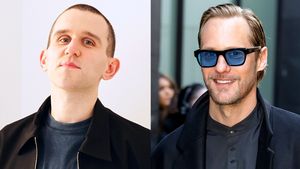










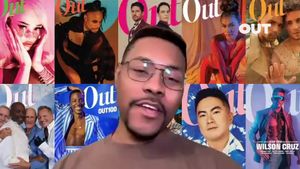





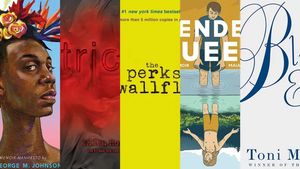
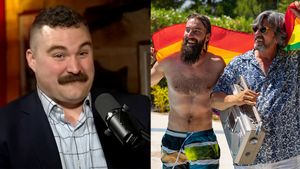




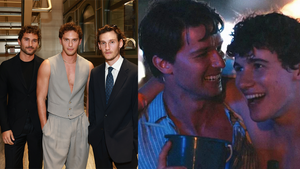












Here's our dream all-queer cast for 'The White Lotus' season 4